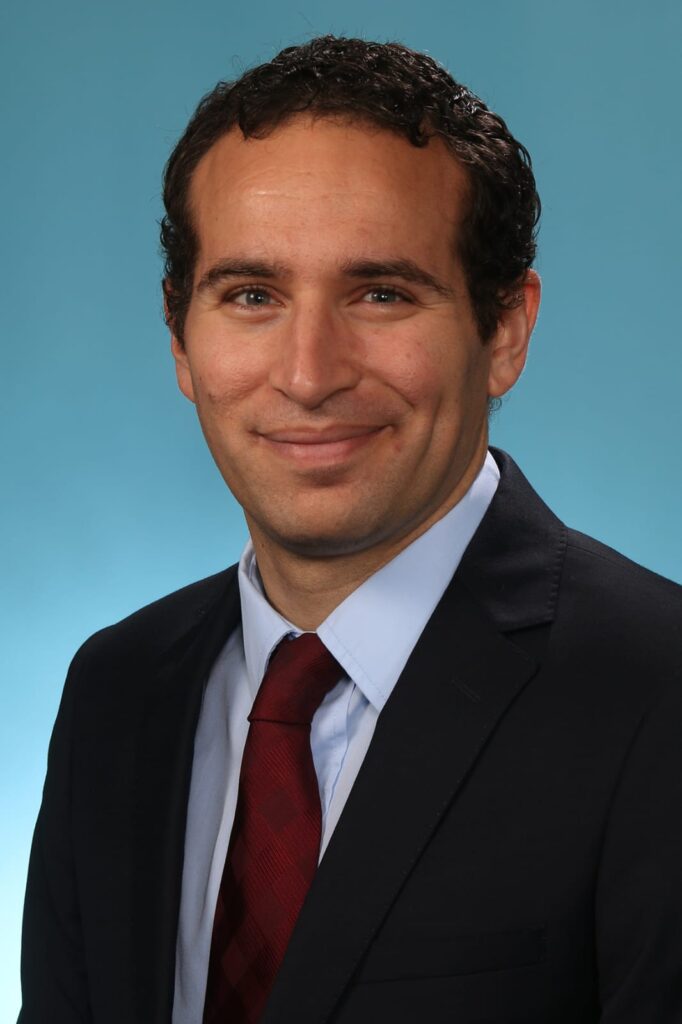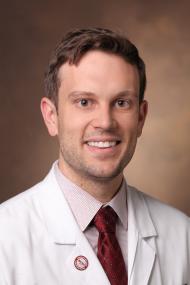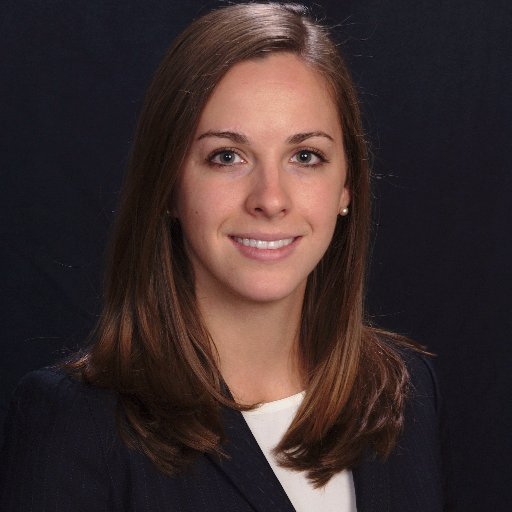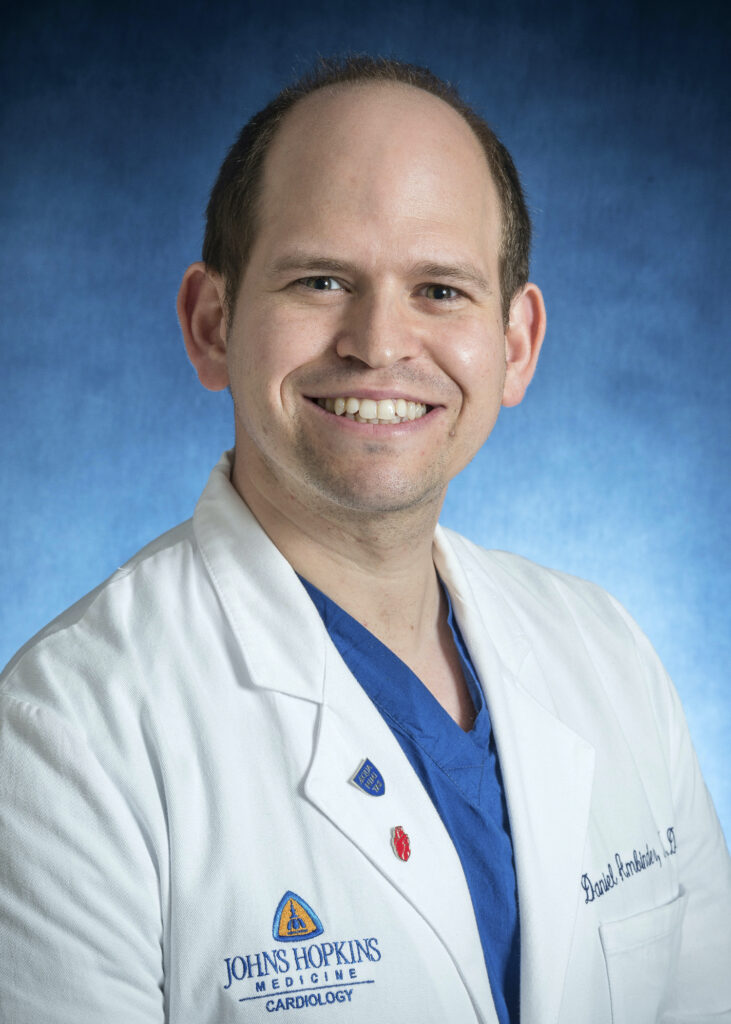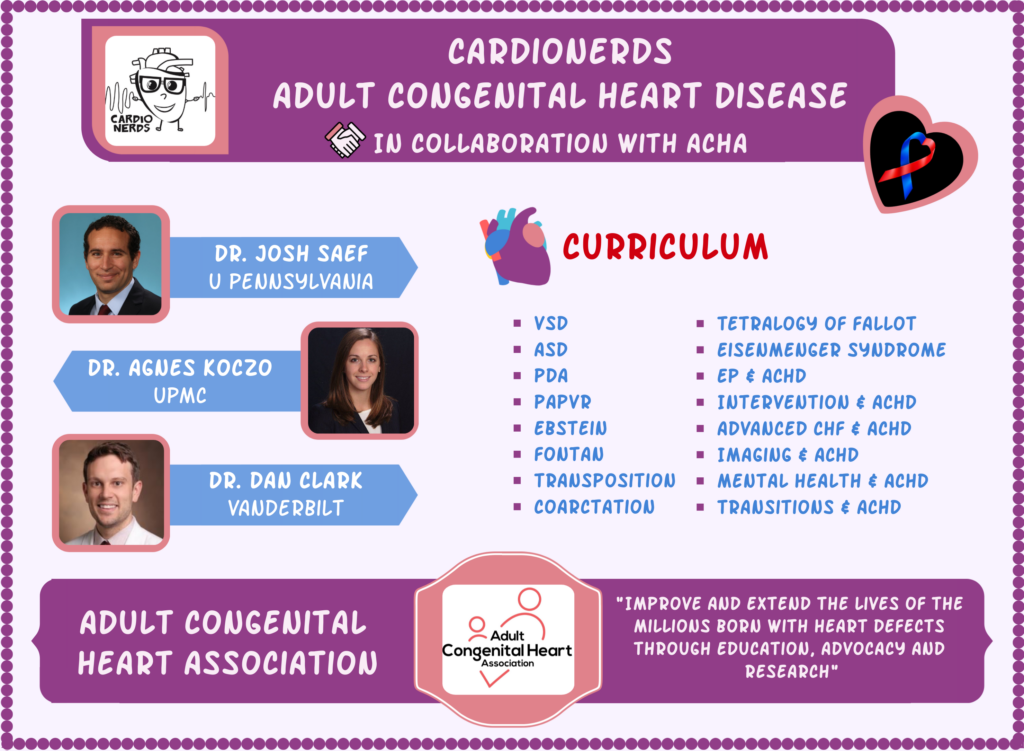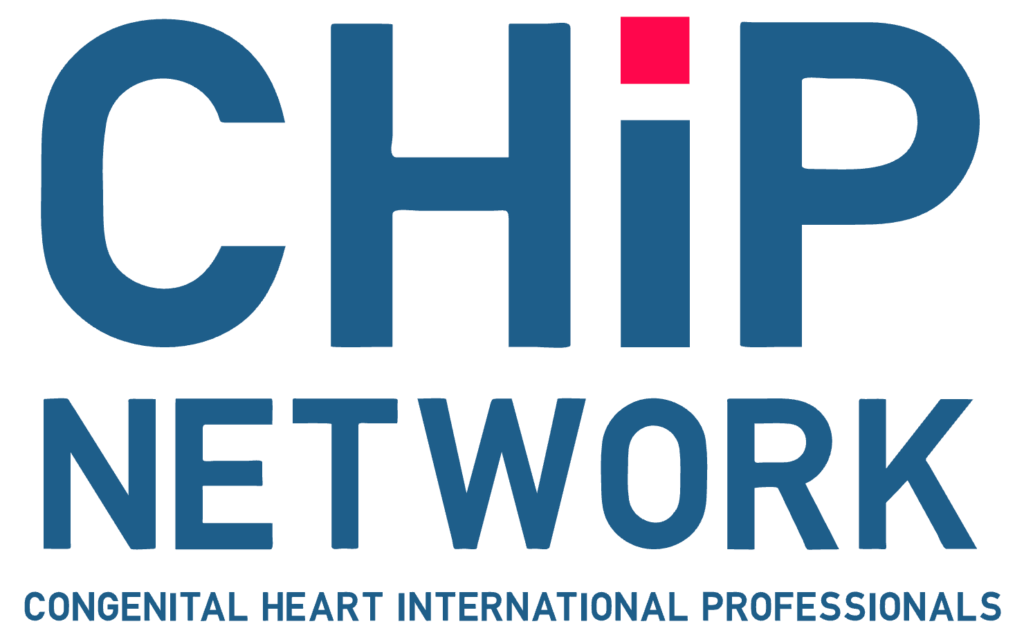
 Cardionerds: A Cardiology Podcast
Cardionerds: A Cardiology Podcast 242. ACHD: Atrial Septal Defects with Dr. Richard Krasuski
Krasuski's Path to ACHD
- Richard Krasuski's interest in ACHD stemmed from a fellowship conversation with Dr. Tom Beishor.
- He was challenged to pursue something unfamiliar, leading to a fulfilling career focused on interventional cardiology within ACHD.
Da Vinci's Discovery
- While Leonardo da Vinci notably described a potential ASD in 1513, it may have been a PFO.
- This highlights the historical challenge of differentiating these conditions.
ASD Classification
- Secundum ASDs (75%) are central, while primum ASDs (15-20%) are inferior and relate to AV septal defects.
- Sinus venosus ASDs (5-10%) are near SVC/RA junction, and coronary sinus defects (<1%) are an unroofed coronary sinus.
CardioNerds (Dan Ambinder), episode lead Dr. Sarah Fahnhorst (ACHD Cardiologist at Spectrum Health in Grand Rapids, Michigan), and series co-chair Dr. Agnes Koczo (fellow at UPMC) learn about ASD from Dr. Richard Krasuski (ACHD Cardiologist and Director of ACHD at Duke University). Audio editing by CardioNerds Academy Intern, student doctor Adriana Mares
An atrial septal defect (ASD) is a common congenital heart disease most often diagnosed in childhood, but initial presentation can be in adulthood. ASDs are abnormal communications between the left and the right atrium. There are four types of ASDs with different embryologic origins. If the defects are large, they will require percutaneous or surgical closure. Unrepaired defects can lead to symptoms of shortness of breath, exercise intolerance, recurrent chest infections, or pulmonary hypertension. This episode of CardioNerds will review the natural history, embryologic origin, diagnostic modalities/findings, indication for closure and long term complications of repaired and unrepaired atrial septal defects.
The CardioNerds Adult Congenital Heart Disease (ACHD) series provides a comprehensive curriculum to dive deep into the labyrinthine world of congenital heart disease with the aim of empowering every CardioNerd to help improve the lives of people living with congenital heart disease. This series is multi-institutional collaborative project made possible by contributions of stellar fellow leads and expert faculty from several programs, led by series co-chairs, Dr. Josh Saef, Dr. Agnes Koczo, and Dr. Dan Clark.
The CardioNerds Adult Congenital Heart Disease Series is developed in collaboration with the Adult Congenital Heart Association, The CHiP Network, and Heart University. See more
Disclosures: None
Pearls • Notes • References • Guest Profiles • Production Team

Pearls – Atrial Septal Defects
- It’s a CLASSIC! – On physical exam a wide fixed split S2 along with a systolic ejection murmur due to increased blood flow across the pulmonary valve and potentially a diastolic rumble across the tricuspid valve are CLASSIC findings with atrial septal defects.
- Atrial septal defects are not all the same. There are four types of atrial septal defects: secundum ASD, primum ASD, sinus venosus and coronary sinus defects (NOTE – the latter are atrial level defects which actually do not involve the interatrial septum). The different types warrant a different approach to closure.
- Use your tools and if your suspicion is high for an atrial septal defect, keep looking. Sinus venosus defects can easily be missed since the superior vena cava is difficult to image in adults. Diagnostic tools include: history and physical exam (USE the stethoscope), ECG, echocardiogram, cardiac MRI, cardiac CT, and cardiac catheterization.
- Not all defects NEED to be closed immediately. Moderate-large defects with a shunt greater than 1.5:1 should be closed due to increased risk of pulmonary hypertension and arrhythmias, barring contraindications.
- Surgery was previously the gold standard for closure of ASDs, but many defects especially secundum atrial septal defects are closed in the cath lab.
Show notes – Atrial Septal Defects
Notes (developed by Dr. Sarah Fahnhorst
- What are the four different types of atrial level defects?
- Secundum atrial septal defect
- Most common type of atrial septal defect (75%)
- Located in the center of the atrial septum (fossa ovalis)
- Hole in the primum septum due to deficiency of the septum secundum
- Primum atrial septal defect
- Accounts for 15-20% of ASD
- Located at the inferior portion of the atrial septum
- In the spectrum of atrioventricular septal defects/endocardial cushion defects
- Defect in the development of the septum primum
- Associated with cleft left AV valve, ventricular septal defects, and subaortic stenosis
- Sinus venosus defect
- Accounts for 5-10% of atrial level defect
- Not a “septal” defect!
- Located near the superior vena cava-right atrial junction or very rarely at the mouth of the inferior vena cava
- 80-90% of sinus venosus defects are associated with partial anomalous pulmonary venous return
- Coronary sinus defect
- Least common <1% of all ASD
- Not a “septal” defect!
- Communication between the coronary sinus and left atrium (“unroofed” coronary sinus)
- Not often seen in isolation but are associated with complex congenital heart disease such as heterotaxy syndrome
- Secundum atrial septal defect
- What are the presenting signs, symptoms and diagnostic findings associated with atrial level defects?
- If small, then asymptomatic
- Moderate to large defects: shortness of breath, exercise intolerance, or recurrent pulmonary infections.
- Physical exam
- Wide fixed split S2, with a systolic ejection murmur due to increased blood flow across the pulmonary valve.
- Diastolic flow rumble may be heard across the tricuspid valve
- If there is pulmonary hypertension the S2 may be particularly loud.
- Chest X-Ray
- Right heart enlargement, prominent pulmonary artery and increased pulmonary vascularity
- ECG:
- Primum defect – left axis deviation, rSR’, and right atrial enlargement
- Secundum defect – incomplete right bundle branch block and possible right axis deviation (could also be normal)
- Sinus venosus defect – inverted P waves in the inferior leads suggesting an absent or deficient sinus node (particularly with prior surgical repair)
- Severe pulmonary hypertension – rSR’ replaced by Q waves and tall monophasic R waves with deep inverted T waves
- Diagnostic modalities:
- Echocardiogram
- Cardiac CT or cardiac MRI
- Cardiac catheterization
- What are the indications for closing an atrial septal defect?
- Some defects close spontaneously. Nearly 100% of defects <3mm will close by 3-5 years of age vs ~90% of defects between 3-5m vs ~80% of defects between 5-8mm will close in that time frame. Defects greater than 8mm are unlikely to close.
- Large left to right shunt (Qp:Qs > 1.5:1) and no signs of pulmonary hypertension
- Symptomatic with a large shunt or signs of right heart enlargement or decreased systolic function
- Primum, sinus venosus, and coronary sinus defects will not close spontaneously
- What are treatment options available for each type of atrial septal defect?
- Surgical: Primum, sinus venosus, and coronary sinus defects are typically closed surgically.
- Some centers are closing sinus venosus defects percutaneously if anatomy is suitable particularly when surgery is deemed high risk.
- If there are additional structural heart defect such as a VSD or cleft mitral valve, then surgical closure is preferred.
- Transcatheter device closure: Secundum defects can be closed in the cath lab if they have sufficient rims, otherwise they will require surgical closure
- Surgical: Primum, sinus venosus, and coronary sinus defects are typically closed surgically.
- What are complications of repaired and unrepaired atrial septal defects?
- Repaired:
- Transcatheter
- Residual defect
- Small increased risk for atrial arrhythmias
- Device embolization
- Surgical
- Residual defect
- Small increased risk for atrial arrhythmias
- Unrepaired
- Pulmonary hypertension
- Eisenmenger syndrome
- Atrial arrhythmias (atrial fibrillation or atrial flutter)
- Right heart failure
- Decreased exercise and functional capacity
- Increased risk of paradoxical embolism leading to risk of thromboembolic stroke
- Transcatheter
- Repaired:
References – Atrial Septal Defects
- Perloff JK. Surgical Closure of Atrial Septal Defect in Adults. New England Journal of Medicine. 1995;333(8):513-514. doi:10.1056/nejm199508243330809
- Stout KK, Daniels CJ, Aboulhosn JA, et al. 2018 AHA/ACC Guideline for the Management of Adults With Congenital Heart Disease: A Report of the American College of Cardiology/American Heart Association Task Force on Clinical Practice Guidelines. Circulation. 2019;139(14):e698-e800. doi:doi:10.1161/CIR.0000000000000603
- Baumgartner H, De Backer J, Babu-Narayan SV, et al. 2020 ESC Guidelines for the management of adult congenital heart disease: The Task Force for the management of adult congenital heart disease of the European Society of Cardiology (ESC). Endorsed by: Association for European Paediatric and Congenital Cardiology (AEPC), International Society for Adult Congenital Heart Disease (ISACHD). Eur Heart J. 2020;42(6):563-645. doi:10.1093/eurheartj/ehaa554
- Gatzoulis MA, Webb GD, Daubeney PEF. Diagnosis and management of adult congenital heart disease. 3 ed. Elsevier Health Sciences; 2017.
- Saremi F. Cardiac CT and MR for Adult Congenital Heart Disease. Springer New York; 2013.
- Allen HD. Moss & Adams’ heart disease in infants, children, and adolescents, including the fetus and young adult. 9 ed. Lippincott Williams and Wilkins; 2016.
Meet Our Collaborators!
Adult Congenital Heart Association
Founded in 1998, the Adult Congenital Heart Association is an organization begun by and dedicated to supporting individuals and families living with congenital heart disease and advancing the care and treatment available to our community. Our mission is to empower the congenital heart disease community by advancing access to resources and specialized care that improve patient-centered outcomes. Visit their website (https://www.achaheart.org/) for information on their patient advocacy efforts, educational material, and membership for patients and providers
CHiP Network
The CHiP network is a non-profit organization aiming to connect congenital heart professionals around the world. Visit their website (thechipnetwork.org) and become a member to access free high-quality educational material, upcoming news and events, and the fantastic monthly Journal Watch, keeping you up to date with congenital scientific releases. Visit their website (https://thechipnetwork.org/) for more information.
Heart University
Heart University aims to be “the go-to online resource” for e-learning in CHD and paediatric-acquired heart disease. It is a carefully curated open access library of educational material for all providers of care to children and adults with CHD or children with acquired heart disease, whether a trainee or a practicing provider. The site provides free content to a global audience in two broad domains: 1. A comprehensive curriculum of training modules and associated testing for trainees. 2. A curated library of conference and grand rounds recordings for continuing medical education. Learn more at www.heartuniversity.org/
CardioNerds Adult Congenital Heart Disease Production Team
